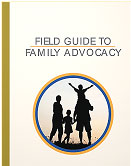 Far too many children are exposed to physical, emotional, and sexual violence every day in their homes, schools, and communities. According to the 2011 National Survey of Children’s Exposure to Violence, sponsored by OJJDP and the Centers for Disease Control and Prevention, nearly 60 percent of the children surveyed had been exposed to violence in the past year; more than 1 in 10 reported 5 or more exposures. Such exposure can cause children significant physical, mental, and emotional harm with long-term effects that can last well into adulthood.
Far too many children are exposed to physical, emotional, and sexual violence every day in their homes, schools, and communities. According to the 2011 National Survey of Children’s Exposure to Violence, sponsored by OJJDP and the Centers for Disease Control and Prevention, nearly 60 percent of the children surveyed had been exposed to violence in the past year; more than 1 in 10 reported 5 or more exposures. Such exposure can cause children significant physical, mental, and emotional harm with long-term effects that can last well into adulthood.
Every April, communities across our nation renew their commitment to ensuring the safety of children during National Child Abuse Prevention Month. OJJDP continues to raise public awareness about child abuse and provide resources to support practitioners, researchers, and communities as they seek solutions to address it.
The challenge of protecting children has been made significantly more complex by ready access to the Internet. Parents, child protection agencies, and law enforcement fight a daily battle to protect children from the threat of online victimization, which can include cyberbullying and cyberenticement. OJJDP took the lead early on in addressing this issue. In 1998, the Office established the Internet Crimes Against Children (ICAC) task force program, which helps state and local law enforcement agencies prevent, interdict, and investigate technology-facilitated child sexual exploitation and Internet crimes against children. Since the program’s inception, ICAC task forces have reviewed more than 670,000 complaints of alleged child sexual victimization. These investigations have led to the arrest of more than 70,000 individuals suspected of sexually exploiting children.
—Acting Administrator Eileen M. Garry
Each of the 61 task forces that comprise the program also conduct Internet safety outreach to increase public awareness of and prevent online child exploitation. Last year alone, the task forces made more than 14,000 presentations on Internet safety and educated approximately 1.5 million people about the potential dangers lurking on the Internet.
In addition to ICAC, the Office supports a wide range of evidence-based programs to address child abuse, violence, and neglect. Following are a few examples of OJJDP’s work:
- The OJJDP-funded National Center for Missing & Exploited Children offers critical intervention and prevention services to families and supports federal, state, and local law enforcement agencies in cases involving missing and exploited children.
- With the support of OJJDP, the Department of Justice’s (DOJ’s) Office of Justice Programs manages the AMBER Alert program, which issues media alerts on radio, television, highway signs, wireless devices, and over the Internet when a law enforcement agency determines that a child has been abducted and is in imminent danger. The program is in its 21st year of operation and, as of December 2016, had rescued 857 children.
- OJJDP provides funding to the Children's Advocacy Centers (CAC), which coordinate the investigation and prosecution of child abuse cases and the treatment of victims using a proven multidisciplinary team approach. With support from OJJDP, the West Virginia and Mississippi State CAC chapters have developed the Field Guide to Family Advocacy. The guide develops, strengthens, and reinforces professional practice and serves as a training resource for victim service professionals.
- DOJ’s Changing Minds campaign, administered by OJJDP, features digital and print content to engage child-serving professionals and caregivers on proven ways to help heal the damage of childhood trauma.
- With support from OJJDP, The National Academies’ Institute of Medicine and National Research Council have developed comprehensive guides for victim service providers, legal professionals, and health care professionals who work with children who have experienced, or are at risk of experiencing, commercial sexual exploitation and trafficking. The guides are derived from the OJJDP-commissioned report, Confronting Commercial Sexual Exploitation and Sex Trafficking of Minors in the United States, which provides a comprehensive overview of the issues and recommendations for action.

Resources:
Visit the National Criminal Justice Reference Service and the Department of Health and Human Services’ National Child Abuse Prevention Month website to find the latest resources and outreach materials on engaging communities in the prevention of child abuse.
OJJDP’s Model Programs Guide provides comprehensive information and resources on risk factors, protective factors, and evidence-based strategies for assisting children and youth exposed to violence and victimization.
The Office’s Child Forensic Interviewing: Best Practices highlights evidence-based approaches to interviewing children in cases of alleged abuse.
